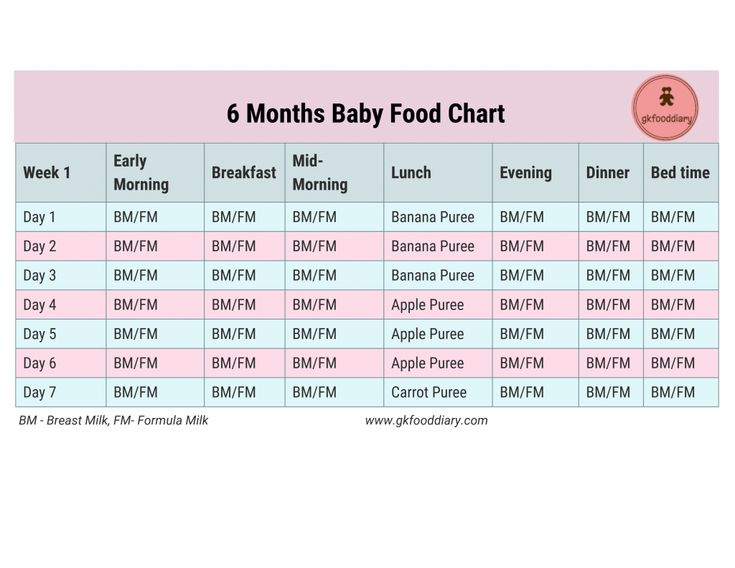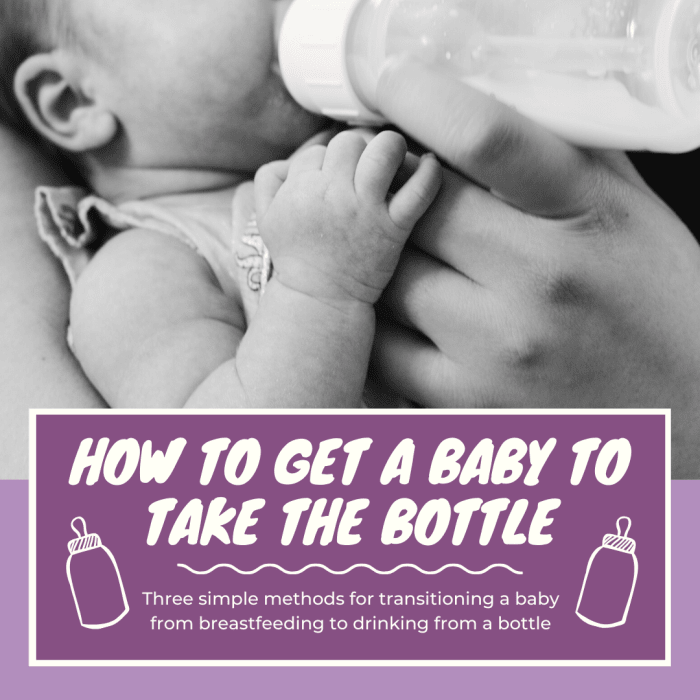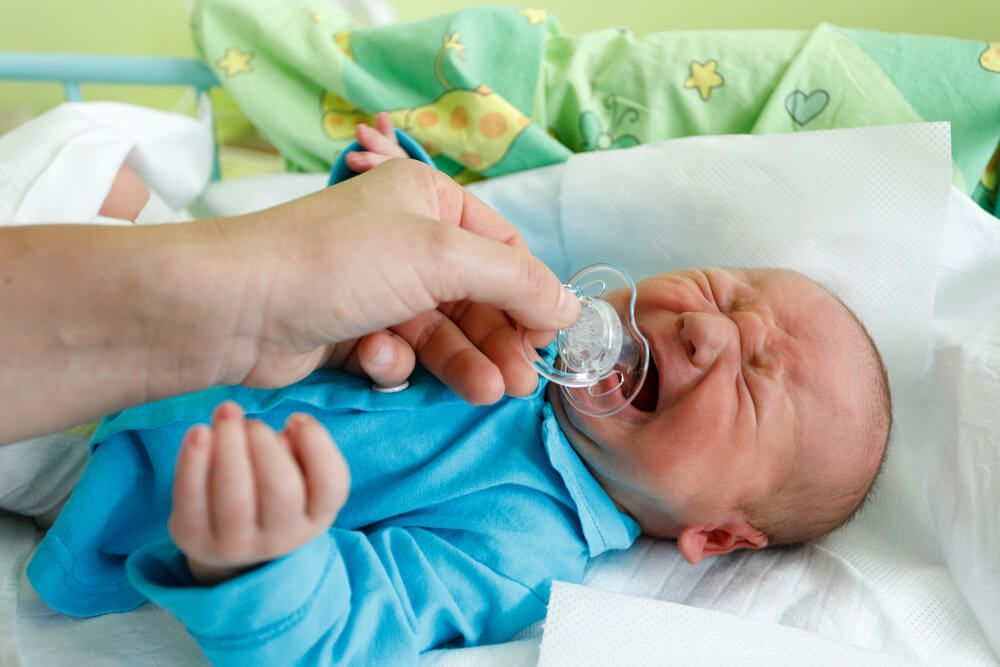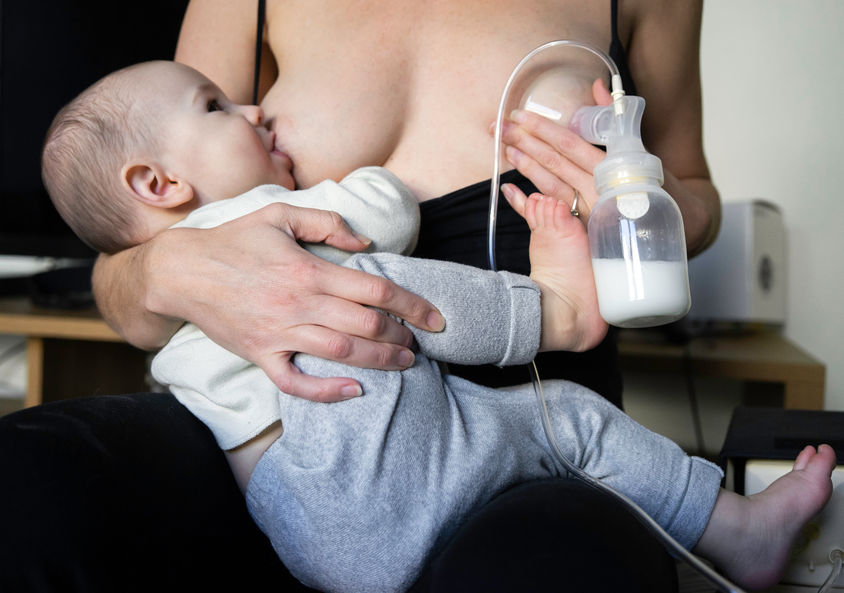Feeding baby in bed
Safer Sleep & the Breastfed Baby
“In most parts of the world… babies sleep close to their mothers, as they have through most of history.” – The Womanly Art of Breastfeeding
A baby is born expecting to stay in close contact with his mother night and day, in order to keep safe, warm and well-fed.
It is perfectly normal for babies—especially breastfed babies—to wake and feed at night throughout at least the first year. Bedsharing when breastfeeding is a traditional way of caring for a baby at night—breastfeeding at night can be a whole lot easier when you take your baby into bed with you and feed lying down.
Breastfeeding mothers who bedshare get more sleep than bottlefeeding mothers1 and breastfeed for longer.2 Alternatively, co-sleeping may give your baby the closeness he craves and make breastfeeding easier without sharing the same sleep surface as you.
It is possible to bedshare with twins, but co-sleeping rather than bedsharing is recommended if they were premature or low birth-weight.
Infant sleep–what are the risks?
The Safe Sleep Seven
Meeting Everyone’s Needs
Sleep Safely
Easy Nights
Infant sleep–what are the risks?
Accidents
Babies sleep in a variety of places at different times. Wherever a baby sleeps an accidental injury is possible. A baby could become wedged between furniture or against a parent’s body, fall off the sleep surface or risk suffocation or strangulation by pillows, cords or blankets.
Anything that reduces your alertness or ability to respond to your baby, such as alcohol, drugs or certain medications, can pose a risk and may impair your judgement.
Breastfed babies orient themselves near their mother’s breast in bed. Research3 shows that mothers who bedshare with their breastfed babies adopt a naturally protective position, making smothering unlikely. This has been referred to as the ‘cuddle curl’ position.
SIDS
Sudden Infant Death Syndrome (SIDS), or cot death, is a sudden unexpected infant death (usually occurring during sleep) that can’t be explained by a medical condition, infection, intentional harm, or accidental causes.
What makes a baby vulnerable
SIDS can happen in any sleep situation, but research has shown that SIDS only happens to baby who are vulnerable. We don’t know exactly which factors cause vulnerability, but they include4:
- baby being less than four months old
- prenatal exposure to harmful chemicals including smoke and alcohol
- preterm or low brith weight baby (under 2.5kg).
SIDs risk factors
The following factors increase the risk of SIDS for a vulnerable baby, wherever they sleep5.
- Exposure to smoke can affect a baby’s ability to rouse from sleep. The risk is related to how much exposure a baby has. It is always a good idea to reduce your baby’s exposure to smoke wherever they sleep, but if you are a smoker you should not share a sleep surface with your baby. Smoking is the biggest SIDS risk.
- Placing a baby on his front to sleep may affect his ability to arouse and to breathe.
 ‘Back to Sleep’ campaigns have reduced SIDS in many Western countries. Bedsharing breastfeeding mothers often nurse in a side-lying position—when a baby comes off the breast they naturally rolls onto their back. A baby who can roll back and forth can choose his own sleep position.
‘Back to Sleep’ campaigns have reduced SIDS in many Western countries. Bedsharing breastfeeding mothers often nurse in a side-lying position—when a baby comes off the breast they naturally rolls onto their back. A baby who can roll back and forth can choose his own sleep position. - Being unattended.
During all sleep (daytime and nightime), a baby’s risk of SIDS is lower if they are in the same room as you. - Formula-feeding (including combi-feeding) imposes a statistically significant higher risk of SIDS.
The Safe Sleep Seven
6Breastfeeding mothers who meet the criteria below are statistically low risk and can bedshare with confidence.
You need to be:
- A non-smoker
- Sober (no drugs, alcohol, or medications that could make you drowsy)
- Breastfeeding
Your baby needs to be:
- Healthy and full term (with a birth weight above 2.5kg)
- Sleeping on their back when they are not breastfeeding
- Unswaddled and lightly dressed
You both need to be:
- On a safe surface.
 Never sleep with your baby on a sofa or armchair.
Never sleep with your baby on a sofa or armchair.
Make an informed decision
Use the information above along with our checklist below to evaluate your baby’s different sleeping places and your own family circumstances, to reduce the risk of an accident or SIDS wherever you and your baby sleep.
Meeting Everyone’s Needs
If you are struggling to reconcile your own sleep needs with those of your baby, then talking with an LLL Leader may be helpful. At an LLL meeting you can find out how other families meet the sleep needs of their sleep needs in different ways and at different stages.
Find local support here. Call our helpline: 0345 120 2918
Photo courtesy: Rosie Rowe
Co-sleeping or bedsharing?
7Bedsharing: adults and infants sharing the same surface for sleep.
Co-sleeping: parents and infants sleeping in close proximity, but not necessarily on the same surface eg in a bedside cot or a sidecar cot attached to the bed.
Some studies combine sofa sleeping with bedsharing, making it more difficult to separate the risk factors for each scenario. See Further Reading for more details, or for more information on these definitions, see here.
Sleep safely
Sleep tipsDo
✔ Place your baby to sleep on their back.
✔ Keep your sleeping baby close day and night, not in a room alone.
✔ Avoid exposing your baby to cigarette smoke at any time as this increases the risk of SIDS.
✔ Place your baby with his feet to the foot of any cot, crib or pram.
✔ Sleep facing your baby in bed (your thigh should prevent him slipping under the covers).
✔ Check your baby’s sleeping place for hazards:
- Choose a firm, flat, clean, well-fitting mattress and cover with a close-fitting sheet.
- Check for gaps that they might get trapped in..
- Ensure they can’t fall out.
- Choose clothes without strings or ties that could cause strangulation.

✔ Check your baby does not get too hot or too cold whilst sleeping. In hot weather, open a window or use a fan.
✔ Keep pets out of your baby’s bed.
NEVER leave your sleeping baby:
✘ Near a fire or radiator, or in full sun.
✘ Wearing warm outdoor clothing when indoors.
NEVER sleep with your baby:
✘ On a sofa or armchair.
✘ If he is swaddled.
When bedsharing do
✔ Sleep facing your baby in bed (your thigh should prevent them slipping under the covers).
✔ Keep pillows and your covers away from your baby.
✔ Ensure anyone in the bed knows your baby is there.
✔ Keep an adult between any older children and your baby in bed.
Don’t bedshare
✘ If any person in the bed is a smoker (even if they never smoke in bed).
✘ On a soft mattress. It isn’t known whether memory foam mattresses are a problem.
✘ If any person in the bed has drunk alcohol, taken drugs (legal or illegal) that could make them extra sleepy, or is too exhausted to be aware of your baby.
✘ If any person in the bed has an illness or condition that affects their awareness of your baby.
Once you can safely and comfortably feed your baby while lying down, you’ve elimated much of the work of mothering for eight of the 24 hours in a day.
Easy Nights
You may find that different sleeping arrangements work at different times. Being inventive and focusing on how you and your family can get the most sleep tonight can help. Some of these ideas may work for you, but because only you know your own circumstances, always keep safety in mind.
Extra space can help. Try:
• Using a cot designed for co-sleeping.
• Pushing your baby’s cot right up to your bed. Lower the side and raise the base for easy access at night; secure the cot to your bed.
• Using a larger bed.
• Putting a single bed at the side for your partner, if you have one, to sleep on—keep your baby away from the gap in the mattresses.
Avoid tumbles by:
• Using a mesh guard rail – but make sure there is no gap between the rail and the bed.
• Taking the legs off the bed or putting the mattress on the floor.
Keep comfortable by:
• Wearing a cardigan to keep your arms warm.
• Dressing your baby in light clothes to avoid overheating.
• Putting an extra thick nappy on your baby to avoid unnecessary changes in the night.
• Keeping a towel handy in case of damp nappies or leaking milk.
Learn to feed lying down by:
• Practising in the daytime!
• Keeping a low light on.
• Going to a La Leche League meeting and learning from other mothers.
• Watching our video on breastfeeding while lying on your side:
These safety tips apply to healthy full-term breastfed infants. Preterm and low birth weight babies are more vulnerable. If your baby seems unwell, seek medical advice promptly. Remember that safety tips can help reduce the risk of SIDS and accidents wherever your baby sleeps, but cannot eliminate the risk altogether.
Preterm and low birth weight babies are more vulnerable. If your baby seems unwell, seek medical advice promptly. Remember that safety tips can help reduce the risk of SIDS and accidents wherever your baby sleeps, but cannot eliminate the risk altogether.
Written by Sue Cardus, Karen Butler, Sue Upstone, Bronwyn Davies & mothers of La Leche League GB.
Further ReadingSweet Sleep: Nighttime & Naptime Strategies for the Breastfeeding Family Wiessinger, West, Smith, Pitman, LLLI. London: Pinter & Martin, 2014.
The Womanly Art of Breastfeeding, LLLI. London: Pinter & Martin, 2010.
Why Your Baby’s Sleep Matters, Ockwell-Smith, S. London: Pinter & Martin, 2016.
LLL links:
Rhythms & Routines
Smoking & Breastfeeding
I need some sleep
Other Online information:
Baby Sleep Info Source
UNICEF: Caring for your baby at night. (link to UNICEF PDF)
References
1Sleep patterns and fatigue in new mothers and fathers. Gay et al, 2004.
Gay et al, 2004.
2Ball, H. L. et al (2016). Bed-sharing by breastfeeding mothers: who bed-shares and what is the relationship with breastfeeding duration? Acta
Paediatrica, DOI: 10.1111/apa.13354.
3Ball, H. L. Parent-infant bed-sharing behaviour: Effects of feeding type, and presence of father. Human Nature 2006; 17(3):301–18.
4Basis. The Triple Risk Model, www.basisonline.org.uk/hcp-the-triple-risk-model/ (accessed 16 Feb 2022)
5SWEET SLEEP: NIGHTTIME AND NAPTIME STRATEGIES FOR THE BREASTFEEDING FAMILY, LLLI. London: Pinter & Martin, 2014; 345-348.
6SWEET SLEEP: NIGHTTIME AND NAPTIME STRATEGIES FOR THE BREASTFEEDING FAMILY, LLLI. London: Pinter & Martin, 2014; 9.
7Basis. Definitions of Terms Used on This Site, www.basisonline.org.uk/hcp-definitions-of-terms-used-on-this-site/ (accessed 16 Feb 2022)
ACADEMY OF BREASTFEEDING MEDINCINE. ABM Clinical Protocol #6: Bedsharing and Breastfeeding 2019., Accessed 16th Aug 2020
You can buy this information in printed form from the LLLGB shop .
Copyright LLLGB 2022 (updated March 2022)
How to Effectively and Comfortably Do It
Written by WebMD Editorial Contributors
Reviewed by Dan Brennan, MD on March 02, 2021
In this Article
- How to Breastfeed While Lying Down
- Why Breastfeed While Lying Down?
- Is Breastfeeding While Lying Down Safe?
Breastfeeding often means staying in one position for an extended period of time, multiple times each day and night. Fortunately, some breastfeeding positions allow the mother (or person breastfeeding) to lay down and effectively feed a baby. Not only are these reclining positions potentially more comfortable for the mother, but they can also provide some benefits in other situations, too.
How to Breastfeed While Lying Down
The key to breastfeeding while lying down is finding a position that is comfortable and safe for both you and the baby. Here are two common positions you can use for breastfeeding while lying down:
Laid-Back Breastfeeding. In this position, the mother leans back on a couch or bed to nurse her baby. It is best to not lay all the way flat, but prop yourself up partially with some pillows. Make sure that your head and your back are fully supported so that you can completely relax for the feeding session. Baby can lay across your chest, or lengthwise down your torso. There are plenty of benefits to this position including:
In this position, the mother leans back on a couch or bed to nurse her baby. It is best to not lay all the way flat, but prop yourself up partially with some pillows. Make sure that your head and your back are fully supported so that you can completely relax for the feeding session. Baby can lay across your chest, or lengthwise down your torso. There are plenty of benefits to this position including:
- Baby can achieve a deep latch on the breast
- Relaxing for mother
- Can be used on all sizes of babies
- Can be used while feeding twins
- Gravity can help slow the flow of milk if it is too fast for your baby
Side-lying breastfeeding. This position is when a mother lies on her side next to her baby and nurses. It is easiest to do in bed, on the floor, or a large couch. Keep your head and back in a straight line, and put your head on a pillow or your arm. You may need to lift your breast or nipple to your baby's mouth. Sometimes, it's more comfortable to bend your knees, or even put a pillow between them.
Sometimes, it's more comfortable to bend your knees, or even put a pillow between them.
Benefits of side-lying breastfeeding include:
- Easily used in bed
- Allows mother's body to rest
- Avoids pressure on C-Section stitches or other painful areas during recovery
- Can be helpful for mothers with large breasts
Why Breastfeed While Lying Down?
After having a baby, breastfeeding lying down can be helpful for many reasons, including:
Recovery. If a mother is recovering from a C-Section, an episiotomy, or vaginal birth, sitting up for an extended period may be uncomfortable or painful. Nursing while lying down may help to avoid pain while recovering from birth.
Comfort. Supporting the weight of a nursing baby can be hard on a mother's shoulders, arms, and back. For some women, nursing in a reclining or lying-down position eases the strain on her upper body.
Sleep. Falling asleep while breastfeeding can be very dangerous for an infant. However, many mothers who co-sleep (defined as baby sleeping in the same room, on a separate and safe sleep surface) find that night feeds are easier while laying down.
However, many mothers who co-sleep (defined as baby sleeping in the same room, on a separate and safe sleep surface) find that night feeds are easier while laying down.
Clogged ducts. It is not uncommon for a breastfeeding woman to experience a clogged milk duct in her breast. Nursing in different positions can help a clog pass, including nursing lying down.
Is Breastfeeding While Lying Down Safe?
Yes, when done correctly, breastfeeding while lying down is perfectly safe. Follow these tips to make sure your baby is comfortable and safe:
- Practice during the day before trying to use it at night
- Ensure that your space is free from excess pillows and bedding
- Do not fall asleep while nursing in a lying-down position
- Always pay attention to your baby
- Always use safe sleep practices for your baby
Side-lying or laid-back nursing can be dangerous if a mother falls asleep; if a baby falls or is smothered by bedding, clothing, or a mother's body, it can be extremely dangerous. But when done correctly, breastfeeding while lying down can be relaxing for both mother and baby.
But when done correctly, breastfeeding while lying down can be relaxing for both mother and baby.
Ultimately, learning how to utilize a variety of positions for breastfeeding can be very helpful for both mother and baby. Being able to adjust to different situations and locations can make breastfeeding easier and less stressful for both of you. If you have questions or need breastfeeding support, consider reaching out to a lactation consultant or speak to your doctor.
Algorithm for feeding a seriously ill patient from a spoon
Indications : inability to take food on your own.
Preparation for feeding 1. Refine the patient's favorite dishes and agree menu with your doctor or nutritionist. 2. Warn the patient 15 minutes in advance about eating and get his consent. 3. Ventilate the room, release place on the bedside table and wipe it or move the bedside table, wipe his. 4. Help the patient to position Fowler. 5. Help the patient wash hands and cover his chest with a napkin. 6. Wash your hands. 7. Bring food and liquid intended for food and drinking: hot (60 ° C) and cold dishes. 8. Ask the patient about the sequence, in which he prefers to take food.
6. Wash your hands. 7. Bring food and liquid intended for food and drinking: hot (60 ° C) and cold dishes. 8. Ask the patient about the sequence, in which he prefers to take food.
Feeding 9. Check temperature hot food with a few drops on the back of the hand. 10. Suggest drink (preferably through a straw) a few sips of liquid. 11. Feed Slowly:
-
name each dish offered to the patient;
-
fill the spoon with solid food;
-
touch the bottom lip with a spoon to the patient opened his mouth;
-
touch the spoon to the tongue and remove empty spoon;
-
give time to chew, swallow food;
-
offer a drink after a few spoons with solid food.
12. Wipe (if necessary) lips napkin.
13. Ask the patient to rinse mouth with water after eating.
Completion of feeding
14. Clean up dishes and leftovers after eating food.
15. Wash your hands.
Appendix 2.
Algorithm for feeding the patient through nasogastric tube with a syringe Janet
Purpose : tube insertion and feeding patient. Indications : trauma, damage and swelling of the tongue, pharynx, larynx, esophagus, swallowing and speech disorder, unconsciousness, withdrawal food, mental illness. Contraindications : peptic ulcer stomach in the acute stage. If a unconscious patient: lying position, head on its side, the probe is left on artificial nutrition for no more than 2–3 weeks Prevention of bedsores mucous. Equipment Janet syringe capacity 300 ml, syringe 50 ml, clamp, tray, glycerin, phonendoscope, nutritional mixture (38–40 °C), boiled warm water 100 ml.
Preparation for feeding 1. Enter nasogastric tube (if not inserted in advance). 2. Inform the patient than his will feed. 3. Transfer patient in Fowler's position. 4. Ventilate room. 5. Warm up the nutrient mixture in a water bath to 38–40 °C. 6. Wash the hands. 7. Draw Janet into the syringe nutrient mixture (300 ml). 8. Overlay clip on the distal end of the probe. 9. Connect the syringe with a probe, lifting it up to 50 cm above the patient's torso to the piston handle was pointing up.
5. Warm up the nutrient mixture in a water bath to 38–40 °C. 6. Wash the hands. 7. Draw Janet into the syringe nutrient mixture (300 ml). 8. Overlay clip on the distal end of the probe. 9. Connect the syringe with a probe, lifting it up to 50 cm above the patient's torso to the piston handle was pointing up.
Feeding 10. Remove mode from distal end of the probe and ensure gradual flow of nutrient mixture. At difficult passage of the mixture to use plunger of the syringe, moving it down. Attention! 300 ml of the nutrient mixture should be injected within 10 minutes!
Completion of feeding 11. After emptying the syringe, pinch the probe clamp. 12. Detach above tray probe syringe. 13. Attach to probe Janet syringe with a capacity of 50 ml with boiled water. 14. Remove clamp and rinse probe under pressure. 15. Disconnect the syringe and plug the distal end probe. 16. Attach the probe to clothing patient with a safety pin. 17. Help the patient get comfortable position. 18. Wash your hands. 19. Do feeding record.
18. Wash your hands. 19. Do feeding record.
Appendix 3.
How to properly feed patients | VOKB No. 1
I.S. Mylnikova
To determine what kind of help a patient needs with feeding, conduct a test. Check if he has swallowing problems.
How to feed the patient so that he does not choke or choke, read the recommendation.
Patients who need help with eating
Help with feeding is necessary for patients with stroke, amyotrophic lateral sclerosis, injuries and other diseases and conditions in which the patient is completely or partially unable to take care of himself. Hospitalized seriously ill patients who cannot take care of themselves should be fed by nurses. Nurses or relatives can help them.
Before nurses and relatives can feed a patient on their own, tell them about the safety precautions to be observed when feeding. Make sure that the nurses, attendants, and relatives who you allow to feed patients know and know how to use the Heimlich maneuver and, therefore, will be able to save the patient if he chokes.
Make sure that the nurses, attendants, and relatives who you allow to feed patients know and know how to use the Heimlich maneuver and, therefore, will be able to save the patient if he chokes.
Haimlich reception is used if a person chokes and needs immediate assistance
Check what help needs
to understand what help will need what help will need during the meal, using
special test to determine if he has swallowing problems. If there are no swallowing disorders, then, depending on the ability to take care of himself, he can eat on his own or with the help of a nurse (care staff, relatives). If, after testing, the patient has swallowing disorders, a consultation with a neurologist or speech therapist is necessary. Perhaps the patient will be assigned the "Nothing through the mouth!" (scheme 1).
Chart 1: How to determine how to feed a patient
When testing for swallowing disorders, refer to the protocol for assessing swallowing function in patients with acute cerebrovascular accident published by the National Stroke Association and the Russian Association for Sports Medicine and rehabilitation of the sick and disabled. It describes how to act for nurses who feed a seriously ill patient.
It describes how to act for nurses who feed a seriously ill patient.
Test the patient for swallowing problems
If the patient can swallow small amounts, give him half a glass of water to drink
Test for swallowing problems in two steps. At the first stage, the nurse determines if the patient is conscious and able to control the position of the head when the health worker lifts him on a pillow. If not, then no further testing is needed. If the patient responds when spoken to and can hold his head, the nurse should find out if he is breathing freely, if he can cough, swallow saliva, lick his lips with his tongue, what kind of voice he has. A hoarse, "wet" voice can be a sign of a disorder.
If the patient has difficulty breathing, hoarse voice, he cannot cough, swallow saliva, lick his lips, the nurse should immediately assume that he will not be able to swallow, and report this to the doctor. The doctor will invite a neurologist to examine the patient and give recommendations on feeding.
In the second step, give the patient one teaspoon of water. If he swallows it without difficulty, give a second and then a third spoonful and observe his actions. If he swallows small portions without problems, give him half a glass of water to drink.
A patient who does this without difficulty, feed according to the table prescribed by the attending physician. If symptoms of a swallowing disorder appear during the test, you cannot feed him orally - immediately tell the doctor about this.
Feeding advice for a patient who cannot swallow spontaneously is given by a neurologist after a second examination. Write them down on a separate sheet of paper and hang them at the head of your bed.
The attending physician determines in which position the patient should lie or sit during feeding: how many degrees to raise the head, whether to feed on a bed with full support or in a chair. The doctor will give other recommendations on feeding: whether the patient can eat on his own or who should feed him - a swallowing specialist (dysphagia), a nurse, a nurse, relatives. He will tell you what type of help is needed: to feed from a spoon, to support a hand, to give gesture or verbal prompts, or just to observe.
He will tell you what type of help is needed: to feed from a spoon, to support a hand, to give gesture or verbal prompts, or just to observe.
The doctor will determine how much food and liquid can be given per feeding and per day, how much food can be placed in the patient's mouth at one time. It can be half a teaspoon, a teaspoon, half a dessert spoon.
Repeat test according to indication. Based on it, develop new recommendations for feeding. Include them in the patient's discharge summary.
Situation: a stroke patient has trouble swallowing
He periodically coughed while eating and could choke. Nurses and relatives did not pay attention to this. The patient's wife came to visit and brought chicken cutlets. When he tried to swallow the first bite, he choked, turned blue, and died a few minutes later. An autopsy showed that a piece of cutlet clogged the respiratory tract
Relatives of the deceased ordered a forensic examination and, based on its results, sued the hospital. They accused the health workers of noticing swallowing disorders in the patient, not prescribing a special diet, and not warning relatives. The nurse on duty who found the patient with an airway obstruction was accused of not applying the Heimlich maneuver. The case ended with the reconciliation of the parties.
They accused the health workers of noticing swallowing disorders in the patient, not prescribing a special diet, and not warning relatives. The nurse on duty who found the patient with an airway obstruction was accused of not applying the Heimlich maneuver. The case ended with the reconciliation of the parties.
What to do so that the contents of the stomach are not flowing into the respiratory tract
Lay patients at an angle of 45 degrees so that the food does not fall into the respiratory tract
so that the food mass does not flow from the stomach into the respiratory tract of a seriously ill disease. patient, after feeding, do not lay it horizontally. When eating, raise the head of the bed at least 45 degrees and leave it in that position for at least an hour.
Do not feed the patient before any procedures that require the head to be lowered. Give food no later than four hours before intubation or extubation of the trachea.











